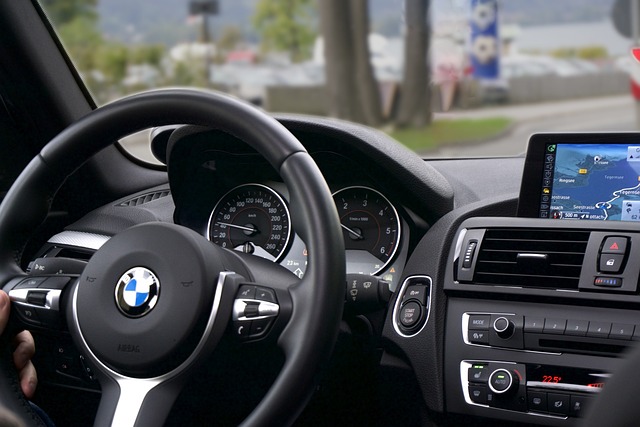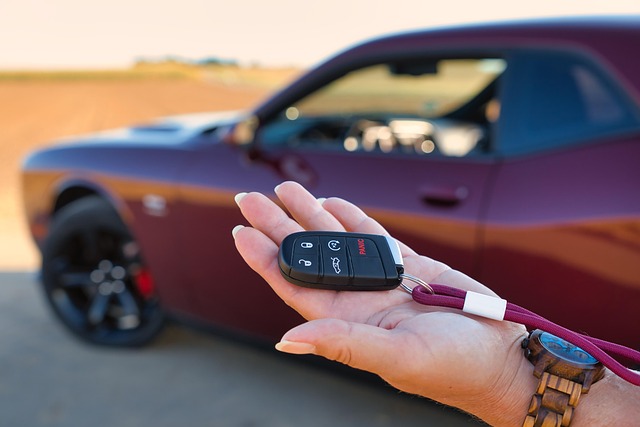Looking to register your car in California? This comprehensive guide walks you through every step, from understanding crucial vehicle registration requirements to completing the DMV VIN verification process. We’ll outline the necessary documents, guide you through the application process, and help you pay the registration fees. By following these steps, you’ll be on your way to securing your California vehicle registration in no time.
- Understand California Vehicle Registration Requirements
- Gather Necessary Documents for Car Registration
- Visit Your Local DMV for Vin Verification
- Complete the Registration Application Process
- Pay Registration Fees and Receive Your Plate
Understand California Vehicle Registration Requirements

Before registering your car in California, it’s crucial to understand the state’s specific requirements. The California Department of Motor Vehicles (DMV) mandates several key steps for vehicle registration, including a thorough inspection and verification process. One essential component is the DMV VIN (Vehicle Identification Number) verification, which confirms the authenticity and history of your car.
Additionally, you can opt for a convenient alternative to traditional DMV visits: mobile VIN verification services. These services offer a quick and efficient way to complete the VIN inspection process right from your location using a mobile vin verifier or mobile vin inspection tool. This option streamlines the registration process, saving you time and potential hassle.
Gather Necessary Documents for Car Registration

Before you can register your car in California, you’ll need to gather several essential documents. The California Department of Motor Vehicles (DMV) requires proof of ownership, typically through a vehicle registration from the state where the car is currently registered or a bill of sale if it’s being purchased new. Additionally, you must provide a valid driver’s license or state ID card and proof of insurance.
For a seamless process, consider using a mobile vin verifier to ensure your vehicle’s identity is accurately confirmed. This can be especially helpful if you’re transferring ownership or selling the car. A mobile vin inspection allows for quick verification of your car’s history, including any accidents or outstanding issues, which can save time and potential headaches during the registration process at the DMV.
Visit Your Local DMV for Vin Verification

Before you can register your car in California, you’ll need to undergo a crucial step known as DMV VIN verification. This process involves visiting your local Department of Motor Vehicles (DMV) office and ensuring that your vehicle’s unique Vehicle Identification Number (VIN) is genuine and aligns with its components and specifications. A mobile vin verifier or inspector can also facilitate this inspection by providing an on-site, convenient service for those who prefer not to visit a DMV in person.
During the verification process, DMV staff or a licensed vin inspector will check various elements like the engine, chassis, and body panels against the VIN data to confirm their authenticity and condition. This step is essential as it helps prevent fraud, ensures vehicle safety, and facilitates accurate registration of your automobile within California’s regulatory framework.
Complete the Registration Application Process

To complete the registration application process for your car in California, you’ll need to follow a few key steps. First, gather all necessary documents, including proof of ownership, vehicle identification number (VIN) verification, and any other required paperwork. The DMV offers both online and in-person submission options, but for convenience, many residents opt for the mobile vin verification process. This allows you to complete the VIN inspection from the comfort of your home or even while on the go.
Once all documents are ready, submit your application through the appropriate channel. If using a mobile vin verifier, ensure that the service is recognized and approved by the DMV to avoid any issues. After your submission is processed, you will receive your registration certificate, which grants official recognition of your vehicle’s ownership and compliance with California’s motor vehicle regulations.
Pay Registration Fees and Receive Your Plate

After submitting your application and documents to the DMV, the next step is to pay the registration fees. These fees cover a range of costs associated with registering your vehicle, including licensing, titling, and vehicle identification number (VIN) verification. The DMV will conduct a thorough VIN inspection to ensure the vehicle’s history is clear and there are no outstanding issues. This process is crucial for maintaining California’s robust vehicle regulations.
Once your application is approved and the fees are paid, you’ll receive your license plate and registration papers. It’s important to carefully review these documents for accuracy and keep them on hand for future reference. Remember, a valid license plate is essential for legally operating your vehicle on California roads, and the DMV may conduct mobile VIN verification to ensure compliance at any time.
Registering a car in California involves understanding specific requirements, gathering essential documents, and completing a structured application process. After visiting your local DMV for VIN verification, you’ll be on your way to receiving your vehicle’s registration and license plate. Remember to keep all necessary papers handy for future reference and annual renewals. With these simple steps, you can ensure your car is legally registered and ready to hit the California roads.
